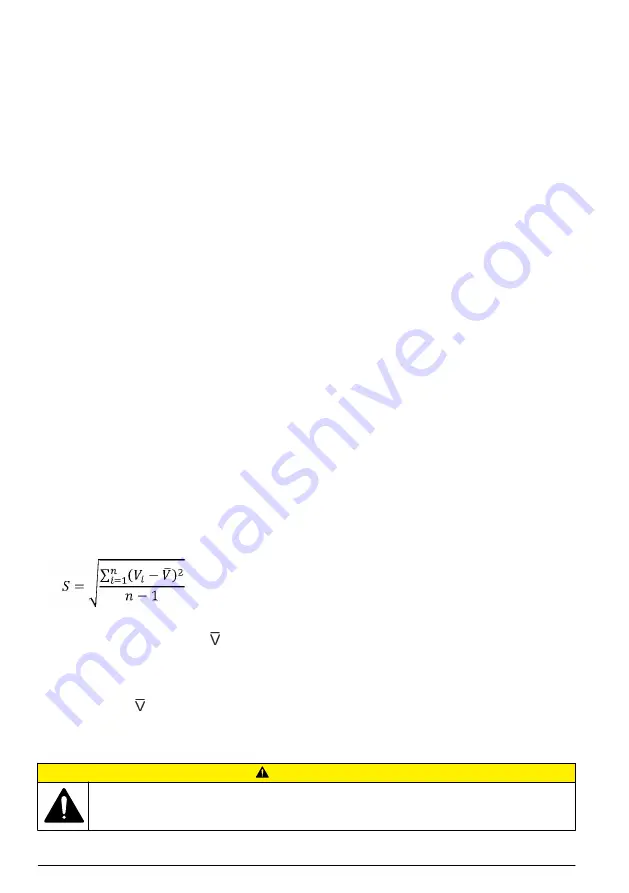
7.
Change the actual volume with the scroll key and accept with
OK
.
8. Save?
is displayed. Accept with
Yes
.
The adjustment has been changed.
Formulas for calculating results
Conversion of mass to volume
V = (w + e) × Z
where: V = volume (µL); w = weight (mg); e = evaporation loss (mg); Z = conversion factor for mg/µL
conversion
Evaporation loss can be significant with low volumes. To determine mass loss, dispense water to the
weighing vessel, note the reading and start a stopwatch. See how much the reading decreases
during 30 seconds (e.g. 6 mg = 0.2 mg/s).
Compare this to the pipetting time from tareing to reading. Typically pipetting time might be
10 seconds and the mass loss is 2 mg (10 s x 0.2 mg/s) in this example. If an evaporation trap or lid
on the vessel is used the correction of evaporation is usually unnecessary.
The factor Z is for converting the weight of the water to volume at test temperature and pressure. A
typical value is 1.0032 μl/mg at 22 °C (71.5 °F) and 95 kPa.
Accuracy (systematic error)
Accuracy is the difference between the dispensed volume and the selected volume of a pipette.
A = V – V
0
where:
A = accuracy; V = mean volume; V
0
= nominal volume
Accuracy can be expressed as a relative value:
A% = 100% × A / V
0
Precision (random error)
Precision refers to the repeatability of the pipettings. It is expressed as standard deviation (s) or
coefficient of variation (cv).
where:
; S = standards deviation; = mean volume; n = number of measurements
Standard deviation can be expressed as a relative value (cv).
cv = 100% × S /
Maintenance
C A U T I O N
Multiple hazards. Only qualified personnel must conduct the tasks described in this section of the
document.
14
English
Содержание TenSette plus
Страница 2: ...English 3 Deutsch 17 Fran ais 33 Nederlands 49 2...
Страница 65: ......















































